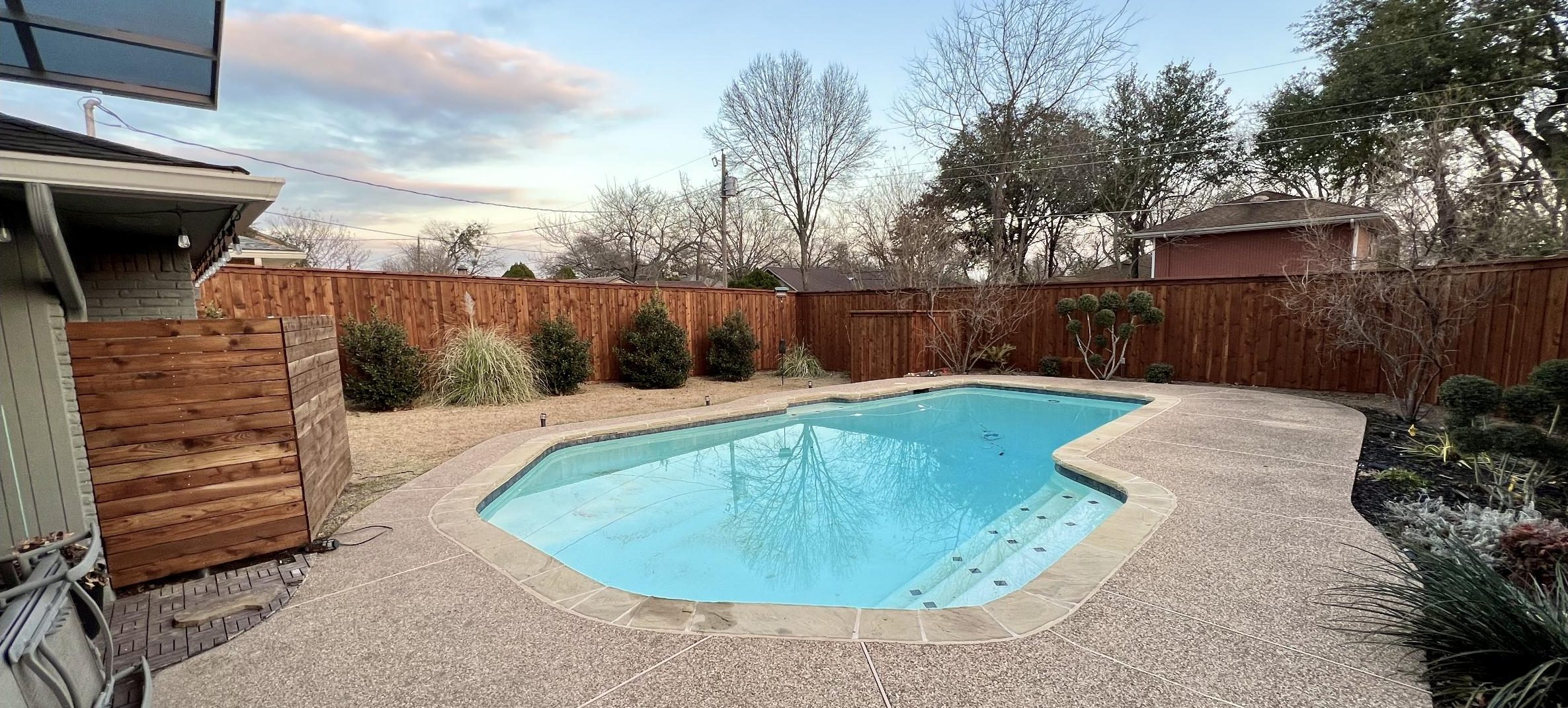
What makes a pool barrier “code-compliant”?
- Minimum height: Residential pool barriers are generally 48″+ high measured on the outside grade, with tight ground clearances and no footholds that create a climb path.
- Gate safety: Pedestrian gates must swing outward, be self-closing and self-latching, with latch placement/clearances that prevent child access (typical residential latch rules derive from ISPSC §305.3).
- Openings & climb resistance: Openings near latches and in the fence must remain small enough to prevent reach-through; horizontal members and lattice have specific spacing limits.
- Doors/windows from the house: If a house wall forms part of the barrier, you’ll need door alarms meeting UL 2017 (with elevated deactivation switch) or a listed safety cover alternative per ISPSC.
- Above-ground pools: The pool wall can serve as the barrier if it meets ISPSC height and clearance rules; mounted barriers on the wall must still reach 48″ overall.
- Clear zones & equipment: Maintain a clear zone and keep equipment (pumps/heaters) a safe distance from the outside of the barrier so it doesn’t create climb points.
Final approval is based on your city’s adopted code (ISPSC/IRC) and any local amendments. We confirm requirements during your estimate and include permit support where applicable. ICC
DFW South-Area code snapshot
- Arlington – City resources cover permits/inspections for pools and pool-yard enclosures; requirements reference Texas standards and local ordinances. We verify specifics during plan review.
- Grand Prairie – Adopts 2021 ISPSC; the city publishes residential pool guidelines and a barrier requirements handout aligned to ISPSC §305.
- Mansfield – City FAQ points to 2018 ISPSC §305 for pool barrier rules.
- Duncanville – Local ordinance requires pool fences ≥ 6 ft and limits temporary barriers—stricter than the base ISPSC.
- Cedar Hill – Pool fencing must comply with IRC Appendix G (residential pool barrier provisions) per city code.
- DeSoto – Adopts 2021 ISPSC with city amendments (see published code amendments).
For multifamily/HOA-controlled pools, Texas Health & Safety Code Ch. 757 adds statewide “pool yard enclosure” duties to local code.
Materials & designs that pass inspections
- Wood privacy (cedar or PT): Excellent screening; we build to meet barrier height/clearance and gate specs.
- Steel or aluminum picket: Durable, climb-resistant profiles with compliant spacing.
- Mesh safety fences: Removable, non-climb mesh systems recognized in Texas Property Code for HOAs (doesn’t override city code—but often accepted when built to ISPSC).
- Gates & hardware: Out-swing, self-closing, self-latching, with compliant latch height/placement.
- House-side protections: UL 2017 door alarms or ASTM F1346 safety covers when using the home as part of the barrier, per ISPSC allowances.
Our process
- On-site measure & code check — We confirm layout, elevations, gate locations, and whether any house walls need alarms.
- Permit-ready proposal — Barrier spec, hardware, and details aligned to your city’s adopted code.
- Install to spec — Posts set deep, proper clearances, outward-swing gates, tested self-close/self-latch.
- Final walkthrough — We pre-check code items before inspection and provide stain/seal options for wood.
FAQs
Is a regular yard fence enough?
Not always. Barriers must meet specific height, gate, and opening rules even if the yard is fenced; using a house wall typically requires door alarms or a listed cover.
Do latch heights really matter?
Yes—inspectors look for out-swing, self-closing, self-latching gates and compliant latch height/clearance so children can’t reach or reach-through.
Above-ground pools—do I still need a fence?
Often the pool wall can be the barrier if it meets ISPSC height/clearance and access rules; many homes still add a gate/landing solution at ladders or decks.
What if my HOA wants mesh?
Texas law protects certain transparent mesh/clear-panel enclosures from HOA bans, but you still must satisfy city code.
Ready to build a code-compliant pool fence?
We’ll confirm your city’s current code, prepare a permit-ready design, and install a barrier that passes inspection—without compromising curb appeal. Get a Free Quote today.

